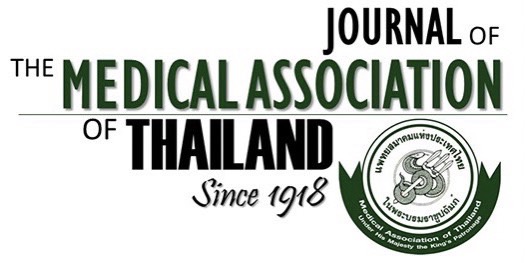Cadmium-Exposed Population in Mae Sot District, Tak Province: 1. Prevalence of High Urinary Cadmium Levels in the Adults
Witaya Swaddiwudhipong MD, MSc*, Pisit Limpatanachote MD**, Pranee Mahasakpan BSc, MPH*, Somyot Krintratun MD**, Chantana Padungtod MD, DrPH***
Affiliation : * Department of Community and Social Medicine, Mae Sot General Hospital ** Department of Internal Medicine, Mae Sot General Hospital *** Bureau of Occupational and Environmental Diseases, Ministry of Public Health
Background : In Mae Sot District, Tak Province, Thailand, the paddy fields receiving irrigation from the two
creeks and crops grown in the areas were found to contain markedly elevated cadmium levels during the
surveys in 2001-2004.
Objective : The present report carried out a survey in 2004 to determine urinary cadmium, a good index of
excessive cadmium exposure and body burden, among the exposed residents aged 15 years and older in these
contaminated areas.
Materials and Methods : Morning urine samples were collected from the subjects and then kept frozen until
cadmium analysis. Urinary cadmium was determined using the atomic absorption spectrometry and urinary
creatinine was determined using a method of reaction with picric acid at alkaline pH and colorimetry.
Results : Of the 7,697 persons surveyed, only 45.6% had urinary cadmium levels < 2 µg/g creatinine. About
4.9% were between 5 and 10 µg/g creatinine and 2.3% had cadmium concentrations > 10. The urinary
cadmium level was greater among women than men and increased with increasing age. Smokers were more
likely to have high urinary cadmium than non-smokers. Persons who mainly consumed rice grown locally in
the contaminated areas had higher urinary cadmium than those who did not.
Conclusion : Persons who had high urinary cadmium levels and might have cadmium-induced toxic effects
should be screened for early detection of chronic cadmium toxicity. Smoking cessation programs should be
one component of preventive action beneficial for the study population. The production of rice and other
crops for human consumption should be prohibited to prevent further accumulation of cadmium in the body of
the exposed population.
Keywords : Cadmium, Urinary cadmium, Smoking, Rice consumption



